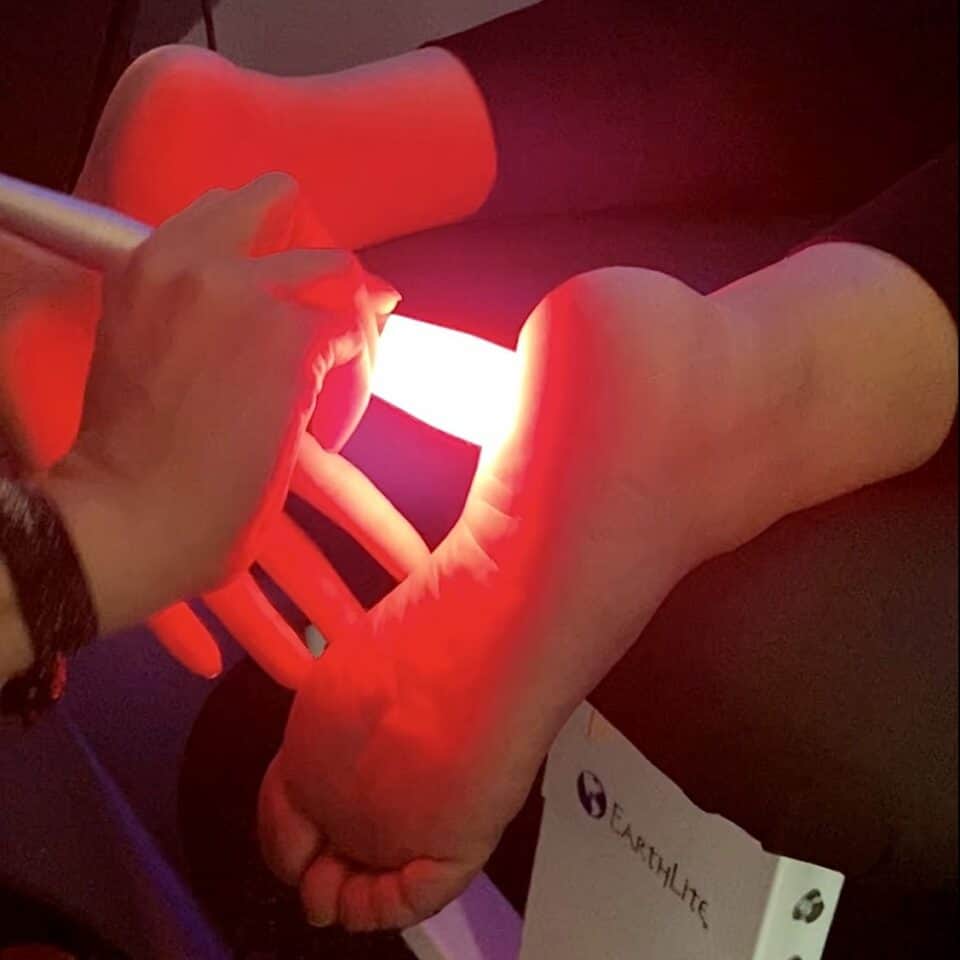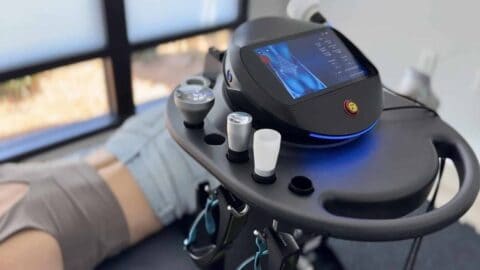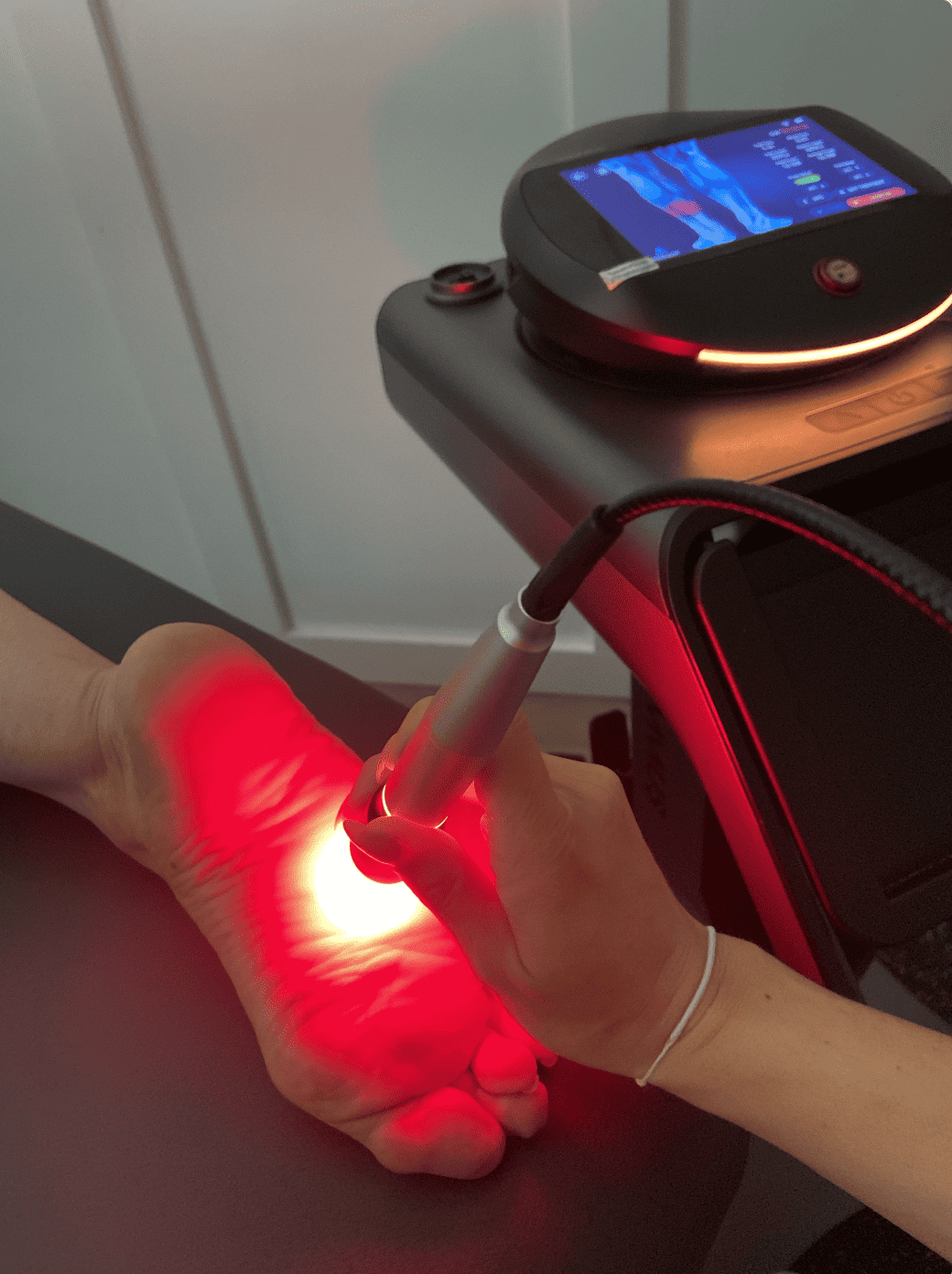The use of light therapy to promote healing and resolve inflammation is gaining traction in modern medicine. Two notable approaches include Red Light Therapy (RLT) and Class IV laser therapy. While these methods share similarities, they also have several distinct differences, affecting their applications and effectiveness. Let’s dive into a comparative analysis of RLT and Class IV laser therapy.
Table of Contents
- Similarities
- Differences
- What Conditions Can Laser Therapy Help With?
- Is Laser Therapy Painful?
- What is the Difference Between Infrared and Red Light Therapy?
Similarities
Mechanism of Action
Both RLT and Class IV laser therapy operate on a concept known as photobiomodulation (PBM). This process involves using specific light wavelengths to stimulate cellular activity, enhance recovery, and resolve inflammation. Essentially, both forms of therapy use light energy to help cells perform their functions more efficiently.
Precision Healing with Summus Class IV Laser
Experience targeted pain relief with our advanced Summus Class IV Laser Therapy. Discover how this cutting-edge treatment could accelerate your healing process.
Therapeutic Applications
RLT and Class IV laser therapy are both non-invasive treatment options often used in physical therapy, sports medicine, and pain management.1 They have proven effective for various conditions such as arthritis, tendinitis, muscular injuries, neuropathy, skin conditions, and wound healing. Both types of therapy can alleviate pain, resolve inflammation, and accelerate tissue repair and regeneration.
Differences
Type of Light and Wavelength
The most significant difference between the two forms of therapy is the type of light and wavelength used. RLT uses a range of both red and near-infrared light (600-1000 nm)2, while Class IV laser therapy uses a more concentrated, high-powered laser in the near-infrared range (>800 nm)3. The more powerful the light, the deeper it can penetrate tissue, making Class IV laser therapy more effective for deep-seated injuries.
Type of Light and Wavelength
Others might be curious, ‘What is the difference between red light therapy and infrared?’ The most significant difference between the two forms of therapy is the type of light and wavelength used. RLT uses a range of visible red light (600-700 nm) and near-infrared light (700-1000 nm), while Class IV laser therapy uses a more concentrated, high-powered laser in the near-infrared range (>800 nm).
It’s important to note that while RLT uses both red and near-infrared light, the term “infrared therapy” typically refers to treatments that use only infrared wavelengths, which are invisible to the human eye. Infrared therapy can be further divided into near-infrared (700-1400 nm), mid-infrared (1400-3000 nm), and far-infrared (3000-100,000 nm) categories. In contrast, red light therapy specifically uses visible red light, which has a shorter wavelength than infrared light.
The wavelength of light used determines its ability to penetrate tissues. Red light is readily absorbed by superficial tissues and is particularly effective at stimulating cellular processes in the skin. Near-infrared light penetrates deeper into the body, reaching muscles, joints, and even bones. The more powerful the light, the deeper it can penetrate tissue, making Class IV laser therapy more effective for deep-seated injuries.4
Energy Delivery and Duration
RLT delivers lower energy levels over a wider surface area and a longer time duration, typically around 10-20 minutes. It is a gentle therapy, capable of penetrating up to 5 mm beneath the skin’s surface. In contrast, Class IV laser therapy delivers high energy in a shorter time frame, typically 5-10 minutes, and can penetrate tissues up to 5 cm deep. This makes it effective for treating not only superficial but also deep-seated injuries.
Safety and Side Effects
Both therapies are generally safe. However, due to the higher power, Class IV laser therapy must be applied with caution to avoid potential thermal injuries5. Patients and providers must wear protective eyewear during treatment to prevent ocular damage. In contrast, RLT has few reported side effects, with a lower risk of thermal injury.
Cost and Availability
RLT devices are available at various price points and sizes, from professional units to affordable at-home devices, making this therapy widely accessible. Also, Class IV lasers are significantly more expensive and are typically only found in professional healthcare settings.
Regulatory Approval
The U.S. FDA has not cleared RLT devices to treat specific medical conditions, although they are widely used off-label. In contrast, the FDA has cleared several Class IV laser devices6 for relieving minor muscle and joint pain, and stiffness, and promoting the relaxation of muscle tissue.
While both RLT and Class IV laser therapy utilize the principles of photobiomodulation for therapeutic benefits, they do so in distinct ways. RLT, with its broader spectrum of red and near-infrared light, offers a gentler, more accessible approach that’s well-suited for superficial issues.
The difference, Class IV laser therapy, with its powerful, targeted beams, provides a more potent solution for deeper injuries. The choice between the two will depend on the specific needs of the patient, the depth of the target tissue, and the availability of devices. Always consult a healthcare provider to choose the best treatment option.
What Conditions Can Laser Therapy Help With?
Laser therapy is a versatile treatment that stimulates cellular activity in the body. This makes it effective for a wide range of issues, particularly those involving tissue repair and inflammation reduction. In veterinary medicine, it’s shown promising results for both dogs and cats.
The therapy can be beneficial for various conditions, including post-surgical recovery (even routine procedures like spaying or neutering), skin problems, and joint issues. It’s particularly useful for animals recovering from ACL or CCL tears, those with wounds that need healing, and pets suffering from hip dysplasia. Laser therapy has also shown positive effects in treating luxating patellas and managing arthritis symptoms.
The treatment works by encouraging new skin growth, boosting collagen production, and supporting bone healing processes. Its ability to reduce inflammation makes it a valuable tool in managing pain and speeding up recovery times for many animal patients. As with any treatment, the effectiveness can vary depending on the individual animal and the specific condition being addressed.
Is Laser Therapy Painful?
Laser therapy is generally a very comfortable experience. Most patients report little to no sensation during the treatment. You might occasionally feel a mild, soothing warmth or a slight tingling, but that’s about it.
What is the Difference Between Infrared and Red Light Therapy?
Laser red light therapy uses visible red light (600-700 nm), while infrared therapy utilizes invisible infrared wavelengths (700-100,000 nm). Red light is readily absorbed by superficial tissues, while infrared penetrates deeper into muscles and bones. The choice depends on the target tissue depth and condition being treated.
At The BodyFix, We offer Treatments of Class IV Laser Therapy. We have a top-quality SUMMUS Medical Laser that helps treat various diagnoses!
Precision Healing with Summus Class IV Laser
Experience targeted pain relief with our advanced Summus Class IV Laser Therapy. Discover how this cutting-edge treatment could accelerate your healing process.
Find out more information from our experts at The BodyFix. Or Book an Appointment with us today to start your healing journey! For more information, you can call us at 843-981-4500.
- https://www.ncbi.nlm.nih.gov/pmc/articles/PMC4743666/ ↩︎
- https://www.ncbi.nlm.nih.gov/pmc/articles/PMC3926176/ ↩︎
- https://www.ncbi.nlm.nih.gov/pmc/articles/PMC3418129/ ↩︎
- https://www.ncbi.nlm.nih.gov/pmc/articles/PMC4126803/ ↩︎
- https://www.ncbi.nlm.nih.gov/pmc/articles/PMC3799025/ ↩︎
- https://www.fda.gov/radiation-emitting-products/laser-products-and-instruments/frequently-asked-questions-about-lasers ↩︎
Blog Disclaimer: The information provided on The BodyFix Chiro blog is for general informational and educational purposes only and is not intended as medical advice. These articles reflect our opinions and experiences but should not be used to diagnose or treat any health conditions. Always consult with your physician, chiropractor, or other qualified healthcare provider before starting any new treatment, exercise program, or making changes to your health routine. Any actions you take based on information from this blog are entirely at your own risk, and The BodyFix Chiro and its contributors disclaim any liability for the decisions you make based on this information.



